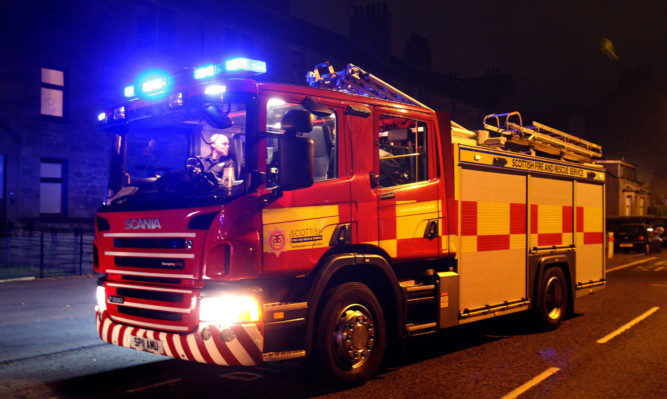
Fire bosses have been accused of “penny-pinching” at the expense of public safety after buying hoses so flimsy they don’t work properly.
The Sunday Post has learned frontline officers have been ordered not to use hose reels on a new fleet of fire engines amid complaints they often “kink” meaning water can’t get through.
It’s believed the kit was only in use for a matter of weeks when the potentially fatal flaw was spotted.
One fire source said: “This beggars belief. How, as a fire brigade, have we ended up in a situation where our most vital piece of fire fighting kit doesn’t work properly?”
The yellow hose reels were bought along with new engines at a significant cost to the taxpayer. Bosses, however, were quick to spot that the pipes had a tendency to tangle in stairwells, stopping water from getting through to the nozzle.
It’s understood they immediately ordered a number of affected engines off the road stretching resources closer to breaking point.
Watch commanders have since asked firefighters to use other hoses when tackling “structural and compartmental blazes”.
Crews have been told to leave the new silicone hoses to lesser jobs.
Union bosses have expressed serious concern over the situation.
Scottish FBU executive council member Roddy Robertson said: “It is an extremely dangerous situation to go into a fire thinking you have a medium to extinguish that fire, only to discover there’s no water there. It is extremely worrying, and I hope inquiries are carried out into what went wrong.
“We need to establish why these were bought, what specifications were asked for and who was in charge of the procurement process. It appears, on the face of it, that a lower specification has been purchased than before, and that usually comes down to cost.”
In a leaked email, seen by The Sunday Post, fire bosses refer to the hoses as having flexibility issues which mean they kink too easily. It is made clear their use should be restricted, and under no circumstances should the hoses be used when water is absolutely critical to ensuring safety concerns are met.
Mr Robertson believes it was irresponsible to cull a body which used to maintain kit standards.
He said: “We used to have a body called the Scottish Central Fire Brigade Advisory Council which was the standards committee for everything. Before a piece of equipment could be used, it would have to go before the council. However, that was abolished in 2005, allowing services to set their own standards. This shows the problems when there’s no overseeing committee.”
The blunder is the latest in a line of equipment issues that have put lives in jeopardy. Two £500,000 fire engines bought by the Central Scotland service in 2006 turned out to be too heavy. The Magirus Multistar Aerial Rescue Pumps when full with firemen broke legal weight restrictions, and weren’t fit for use.
In 2007, six firefighters had to be signed off work for six months after their top-heavy engine toppled at a Hamilton roundabout. Many firefighters voiced concerns about the stability of the £400,000 Aerial Rescue Pumps. Despite that, the service ordered another 18, costing £7.2 million.
A spokeswoman for the Scottish Fire and Rescue Service said: “There are no appliances not being used due to the hose reels.”

Enjoy the convenience of having The Sunday Post delivered as a digital ePaper straight to your smartphone, tablet or computer.
Subscribe for only £5.49 a month and enjoy all the benefits of the printed paper as a digital replica.
Subscribe